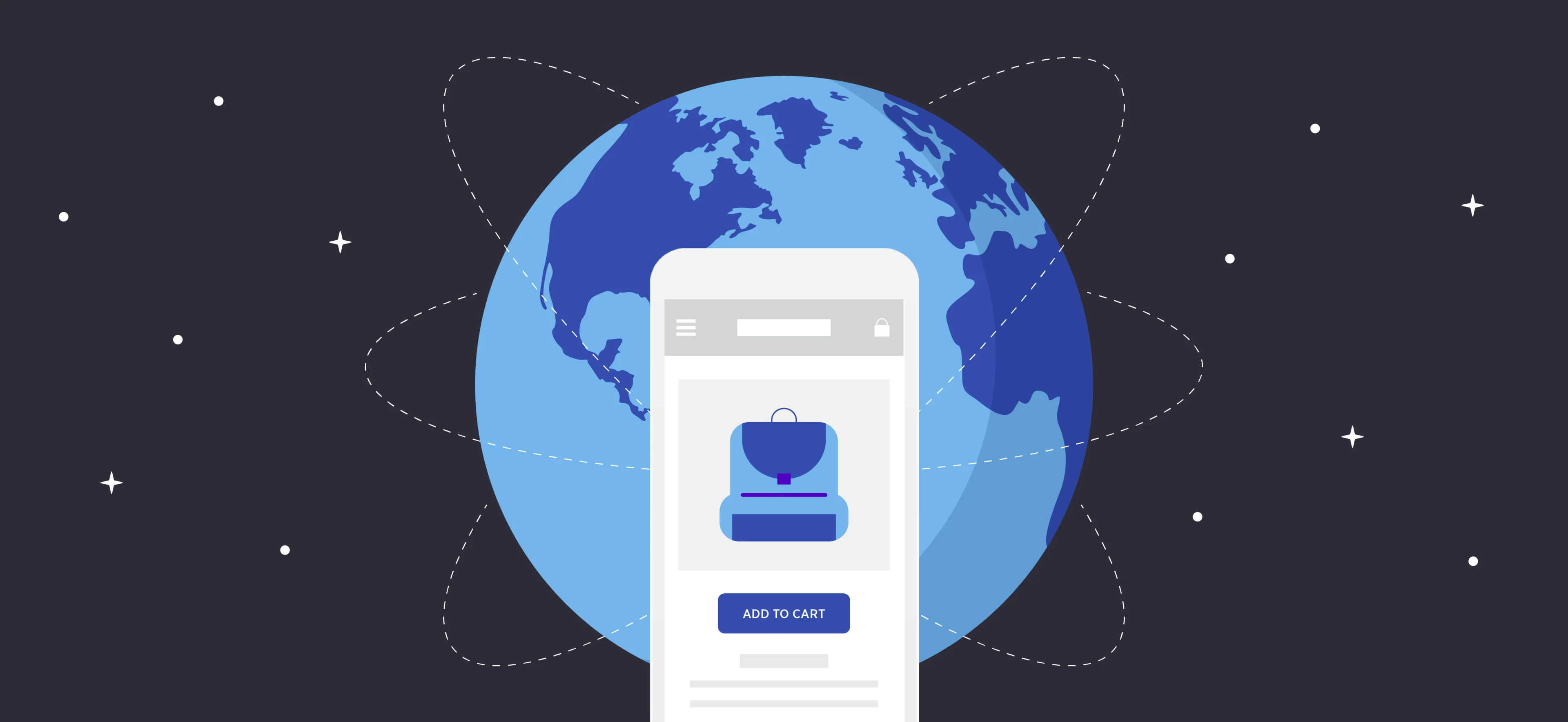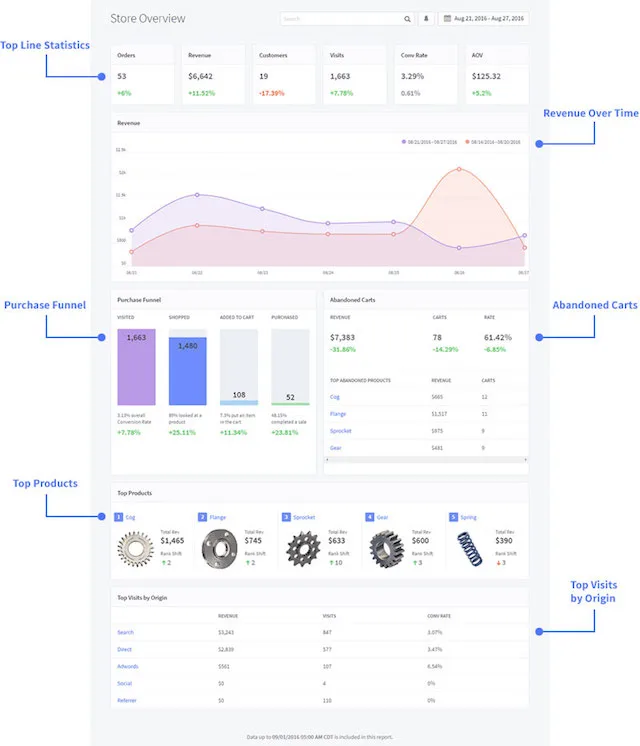The Cross Border Ecommerce Checklist

As you consider cross-border commerce, it is important to evaluate the status of your organization and supporting infrastructure prior to developing a go-to-market strategy.
All brands, no matter your size, can launch an international selling channel.
The tactics you use, though, and how you determine if you are ready, will vary based on your brand’s annual revenue.
We will begin by breaking out readiness questions for each of the following merchant types:
Small business
Mid-market
Enterprise
The International Expansion Playbook
What if you are ready to invest in international expansion and localization to own a brand new market long before your competitors?
That’s what this guide will teach you to do.
Small Business Considerations for Cross-Border Commerce
It is easier than ever to access global markets. Social media doesn’t abide by national borders –– opening your brand up to international business just by being active on Facebook or Instagram.
While the visibility is easy, SMBs should make sure they have a foundation in place so that going global is scalable for the long term.
Here are a few key considerations:
People: Do I have a team that can support this effort?
Product: Can my products sell in specific markets?
Technology: Do I have the technology to support my initiatives?
1. Hire for International Support
As part of your global go-to-market strategy, it’s important you hire high-value team members.
Remember that these team members do not need to be in-house.
You may want to outsource from a site like Upwork or Fiverr to get international support services for those times you are offline in your home country. Or, you may need translation service.
Whatever it is you need to support your lean business as it goes global –– while maintaining the same brand standards you have in your home country –– make sure to have those in place before running an international campaign.
Upwork and Fiverr have great freelancers on the platform, though you may need to work with a few before you find the freelancer that works best with you and your business.
2. Double Check Country-by-Country Product Restrictions
While most products are safe to sell across borders, it is important to double-check by country to see if you have any product restrictions.
The following verticals have particular restrictions by country –– and often even by the state within a country:
Apparel and Footwear
Beauty and Cosmetics
Consumer Electronics
Health Goods
Safety Protection
3. Ensure Your Technology is Scalable
Make sure that you have an ecommerce technology solution that can scale –– and isn’t cost-prohibitive.
For instance, you want a platform that provides out-of-the-box features for many of the standard processes that come with cross-border commerce.
This means you won’t have to download an app which will incur additional monthly costs on top of your platform’s recurring bill.
Here is a quick list:
Analytics and reporting (including merchandising reporting)
Shipping and payment integrations with no additional charge for using the solution of your choice
Going global without a strong technology foundation is a recipe for disaster. You may sell products, but you’ll run into a lot of analog processes that eat away at your time and margin.
4. Small Business Apps for Going Global
For SMBs, going global is a HUGE step. Moreover, as you scale, so does your workload. In many cases SMBs are lean and, for some, managed entirely by one or two key stakeholders.
Understanding that you cannot do it alone is an important step for small business owners.
You take pride and ownership in your business. It’s your baby, after all. That shouldn’t restrict you from bringing on help to scale, even in the earlier stages. When assessing where you could use assistance, pick areas that your internal team lacks in skills and resources.
For example, if you’re great at sourcing your product and marketing it, search for help in customer service and shipping. Better yet, there are solutions and tools that can help you in these areas, and fit within your financial constraints.
Here are a few SMB favorites.
Casengo
Casengo allows merchants to manage customer messages through email, live chat, WhatsApp or Messenger without losing the overview.
Casengo puts a stop to endless searching, dragging, reassigning and copying messages, which all too often results in a slip through the cracks. No more forgotten customers, no matter where they are located globally.
MailChimp
MailChimp’s robust marketing automation ensures your emails get to the right people at the right time.
Target customers based on behavior, preferences and previous sales.
Trigger a series of emails with a single API request.
Use the built-in segmentation to build custom rules.
Delight your fans with a gift.
And when you’re finished, get in-depth reporting insights to make every automated series you send better than the last.
ShipStation
ShipStation integrates with all the most popular shopping carts and marketplaces (more than any other shipping and ecommerce fulfillment software).
In just minutes, you can easily connect all your online selling channels to ShipStation.
Once connected, ShipStation imports all your orders for you and you’ll be able to start using features like printing shipping labels in bulk and second-to-none order automation.
That means you’ll save tons of time on shipping and fulfillment along with no more copying and pasting just to create a shipping label. Best of all, they won’t charge you an extra fee if you want to integrate multiple selling channels.
Check out how Austin Bazaar uses ShipStation to sell on their webstore, Amazon, eBay and more.
Mid-Market Considerations for Cross-Border Commerce
For mid-market brands, many global and emerging markets are already saturated with similar products. In this case, you need to do a full market evaluation before launching, which includes:
Identifying competitors selling in the space
Taking note of what they are doing (especially what seems to be working)
Taking note of what they aren’t doing
Understanding where market fit is most compelling (i.e. what can you offer that they aren’t?)
For brands making more than $1M in annual revenue (considered mid-market), winning globally is about winning market share and customer love.
The key considerations are ultimately the same as they are for SMBs, but with a larger organization twist:
People: How do we manage in-country support?
Product: What consumer and socioeconomic factors may impact merchandising?
Technology: Can we leverage technology to automate workflows?
Market Viability 101
Learn how to evaluate your market viability before you launch.
1. Business functions to hire for when expanding internationally
When entering new markets, providing an exceptional customer experience and support is a must for merchants that would like to establish a footprint.
For international shoppers –– much like your domestic shoppers –– the experience is much more than simply clicking ‘buy now.’
If your brand wants to successfully penetrate a new, international market, here are a few strategies to evaluate and potentially hire for:
Creative (Directionally and Visually): Localization goes beyond just translations. You will need to revisit and potentially update creative assets for various markets. These include: Hero Images, Campaign and Product Photography, and in some cases even color combinations.
Customer Service: Email support is a must-have; however, offering localized ‘Live Chat’ in the local language will enable your team to connect and answer questions shoppers may have at will.
Quick tip: Leverage Facebook Messenger as an additional customer service platform, as mobile-use is a leader in emerging markets.
Order Processing: Localize both payment and shipping methods to build confidence with international shoppers. Your ecommerce technology should enable you to do this easily. BigCommerce, for instance, allows you to alter your currency based on visitor IP address, as well as set regional shipping rules and preferred providers across the globe.
Will you hire locally –– near you –– or locally in your new market? The choice is up to you.
2. Merchandise Products for New Markets
One of the largest oversights when entering new markets is neglecting merchandising.
If each market requires unique creative, customer service and order processing capabilities, do you think merchandising will be any different?
Absolutely not.
In foreign markets, consumer demand is also driven by factors such as climate, religious beliefs, cultural norms and more.
Make sure to invest in both the people and the collaboration tools needed to ensure that key stakeholders have the correct market insights to make critical product decisions.
When merchandising, consider the following:
Climate – Be sure to account for weather. Remember, your summer might be someone else’s winter. Your dry seasons may be someone else’s monsoon.
Competition – Look at how your competition is positioning themselves in the market. It’s best to chart these out. What is their positioning? What products are they selling? Which channels are they using (social, mobile messaging, marketplaces, etc.)?
Consumer Trends – Just because something is popular domestically doesn’t mean it will be internationally. Are they behind in a trend –– or does it just not apply for that market? If you don’t already have sales in a region, do consumer testing and surveys before you ever launch. Know that most businesses that expand internationally already have sales in a particular region before they launch specifically in that country.
Religious Sensitivities – Religion in some emerging markets plays a huge role in how products are used. Be sure yours are socially accepted –– or altered to fit consumer needs.
3. Make Technology an Enabler of Your Success
You don’t have to build a large amount of technical debt to be successful with international selling. Automation is the key to remaining lean, while giving your team time and space for innovation.
Here are a few workflows to automate as you expand:
Email Marketing – Take the time to create audience segments, and then revisit them seasonally to ensure the content is up to date with your brand messaging as well as any regional changes or A/B testing you need to do for your regions.
Product Information Management – Take a weight off your shoulder and invest in a product information management (PIM) system to help you better manage localized content as you scale. Be sure you select one that can provide you a repository for not just product information but also content and media. You can do this on BigCommerce using the products section as well as the content media tab. Keep each country’s product and content usage organized and separated using various BigCommerce stores for specific regions. If you want something more centralized and customized, a company like Jasper Studios can help you set up whatever you need.
Order Processing – Do not let the countries and markets you enter become silos. Make the investment to connect your channels so you can have better strategic planning across your organization. Various ERP systems can help to make this a reality, like NetSuite or eBridge. On the smaller end, BigCommerce can serve this function for you.
4. Managing momentum for mid-market merchants
For mid-market merchants, it is all about Ecommerce360 when engaging in cross-border commerce.
What is eCommerce360?
It is a merchant’s ability to see the big picture when selling globally, and exactly how it impacts the internal organization.
As your scaling brand begins to sell in foreign markets, it is important to execute on new markets by region.
This is because of varying consumer expectations and shopping habits across the globe. For example, how can a North American merchandiser effectively merchandise an Asia-Pacific market without any local insight?
You need to have eyes and ears on the ground in each market.
5. Defining Key Domains When Selling Globally
Logistics and Shipping
Without a doubt, the core foundation to the success of any cross-border commerce initiative is ensuring that your products land in-country. Logistics and shipping should be a key function that is solved for from Day 1.
When solving, there are two approaches that mid-market merchants can take:
Doing it yourself, opening either localized warehouses or shipping from a single warehouse (and incurring the shipping charges, duties, etc.)
Shipping as an affiliate, using a localized warehouse as a 3PL or dropshipper
Your Step-by-Step Guide to Shipping Profitability
Shipping shouldn’t eat into your margins. Here’s how to use it to make money.
Localizing Management Efforts
Mid-market merchants selling globally often require a dedicated resource on the ground in the new market region. When evaluating whether to hire for your global efforts, be sure you look at professionals that understand how to build global teams.
Zapier, for one, is a great example.
Do not look to expand globally without having a key stakeholder with global experience.
Understanding Distance is Disruptive
When managing global resources from a distance, it is important that the key stakeholders on the brand side communicate. Not just product but the brand’s tone, message, vision and voice, so that in-market specialists and teams can mitigate localization versus brand experience.
Be sure that your in-country team understands your company’s top-level goals and how their market helps you meet them.
BigCommerce, for instance, has a workforce in both the U.S. and Australia –– and uses monthly global all-hands meetings to make sure every office is kept up to date with core business news and needs.
Enterprise Considerations for Cross-Border Commerce
For brands making more than $50 million in annual revenue, going global has likely already happened. Expanding into new markets, though, is a constant challenge. Teams are often distributed over timezones, approvals are needed, procurement gets tricky.
Little happens quickly –– and it can seem as though time, and the competitors, are forever getting ahead of you.
As larger brands enter new markets, it is imperative that an organizational culture is put into place that provides in-market teams autonomy to respond to localized issues at will and in a timely manner.
Moreover, be diligent and mindful of not just your product, but how your organization impacts local communities and consumers.
Look at investing more time into marketing and ensure that you have sufficient analytics, data and market insights when planning your go-to-market strategy.
Prior to kicking off initiatives, consider the following:
People: How can we as a brand connect with consumers emotionally?
Product: What lifestyle value does our product bring?
Technology: Are we making the right investments in-country?
1. Hire for Brick-and-Mortar and Beyond
For many larger brands, digital cross-border commerce may be your second pass at establishing a footprint in emerging markets.
Many $50M+ brands already have brick-and-mortar locations in international markets.
The next step is syncing the digital and physical experiences to surprise merchants already familiar with your brand and bring you net new buyers in an international market.
For example, building a successful online-to-offline (O2O) model in China requires collaboration and synergy across your digital and retail teams. Be sure to evaluate the landscape of mobile and social when penetrating a market; in addition to building relationships within communities via in-store experiences.
Your POS provider will be particularly important in this arena.
It’s a small, technology-based step from which customers don’t see immediate benefits. But your teams will save time as inventory syncs automatically, enabling them to better serve your customers.
Integrate your POS system with your ecommerce platform by using:
Clover
2. Be More Than a Product, Become a Lifestyle
For international shoppers, the consumption of everyday goods are done via localized marketplaces in a B2C, C2C or O2O fashion.
So, having market adoption of your product means more than just a one-time use. Showing relevance and how your product impacts everyday life is key to repeat purchases.
Large merchants in many cases have the marketing and PR resources to create transformative lifestyle campaigns.
Be sure to collaborate across disciplines with your CIO and CTO stakeholders to ensure your brand puts together immersive experiences that can be accessed via digital channels in market.
Instagram Shopping is a great example of this. Though only currently available in the U.S. –– merchants based outside of the U.S. can still use it for their U.S. audience.
Here are a few examples:



3. Measure Technology Investment Impact
Leverage your analytics, data and market insights to make the right investments for your business in various markets.
Consumers behave differently across the board.
In the U.S., many merchants may shop on Amazon –– including your target 20-year-old crowd, for instance.
But, if you are a trending brand whose target audience is 20-year-olds, and you are entering China for the first time –– making the investment in a WeChat Store versus TMall would be a better fit.
Away from marketplaces, merchandising analytics can help you understand your localized markets.

6 Ways to Use BigCommerce Insights to Sell More
6 data-driven strategies the world’s fastest growing online brands use to sell more, right now. Get your guide.
4. A transparent, global omni-channel solution for large merchants
Scaling quickly can cause real problems for large merchants as they enter new markets. Today, the omnichannel trend is pressing merchants to quickly deploy solutions that solve for emerging channels and touchpoints consistently.
As these merchants scale across channel, including cross-border, communication and transparency are key drivers to success. Key stakeholders are making critical quarterly decisions that move the needle for their business, including decisions on:
large investments like regional distribution centers
critical c-level hires
allocating funds for the building of global support teams
It is imperative that as enterprise organizations grow their global channels they put in place good measures that will enable vertical transparency within their organization and governance around autonomy for regional teams.
Analytics, Data and Market Insights Validate Decisions
Remove non-researched decisions and rely on analytics, data and market insights as your system of checks and balances. Put tools in place that give in-market teams the autonomy to make key decisions on the fly.
Make sure those tools, however, are systemized across the business, giving executives, directors and managers access to the same data points that drive decisions no matter the market.
For instance, a combination of Google Analytics and BigCommerce’s Ecommerce Analytics & Insights will give each localized team the same platforms to pull data from –– standardizing data measurement across an entire organization.
On both Google Analytics and BigCommerce, you can classify user permissions, allowing only those who need data to see it, use it, download it and manipulate it to make decisions.

This is the out-of-the-box BigCommerce Ecommerce Analytics dashboard.
Remove Silos and Praise Collaboration
One of the biggest challenges to successful omnichannel selling, and cross-border operations, is silo-ed teams which cause a fragmented brand and customer experience.
In a study of top brands working on launching omnichannel strategies, McKinsey found:
67% cited a lack of customer analytics across channels
48% blamed silos within the organization
45% cited an inability to identity customers across shopping trips
Having silos within your organization will be a global nightmare if a foundation for success is not implemented from Day 1.
Apps and tools like the following can help to ease these issues:
Work Like Developers
That does not mean dark rooms, energy drinks and late nights spent programming. It does, however, mean to work with agility.
The common practice in development is working within an agile framework. This means a continuous delivery of items, every two weeks, that are prioritized based on business impact.
Applying this technique to your in-market teams will give your brand business agility and flexibility to execute on projects with measurable business impact.
Measure Global Impact
The Impact Radius platform enables merchants to accurately track all conversion events to maximize the return on ad-spend across digital, mobile (including all mobile web and in-app events) and offline channels, run reports to view activity and optimize offers, negotiate and execute electronic contracts, upload and host ad-creative, and automate payment to partners.
With a suite of advanced technology products, Impact Radius is driving the innovation of affiliate marketing, mobile tracking and big data.
On a single platform merchants can track all media channels, automate tag management, onboard and pay direct affiliates, while viewing and optimizing all conversion paths.
Final Word
Regardless of the size of the merchant, cross-border commerce takes a significant investment of time or money –– and often, both. Understanding the landscape of where you are going and what you need to make it work are critical components of success.
In the next chapter, we’ll cover a go-to-market strategy that will allow you to test your product in market before fully investing.
The International Expansion Playbook
What if you are ready to invest in international expansion and localization to own a brand new market long before your competitors?
That’s what this guide will teach you to do.

Sergio Villasenor is the Founder and CEO of Elliot, a software that simplifies global commerce. In the last decade, he’s guided some of the world's leading retail brands in powering their omnichannel strategies. He pioneered an agile, omnipresent approach and methodology that provides brands solutions with measurable business impact. Some of those brands include: Anastasia Beverly Hills, Buscemi, J Brand Jeans, John Varvatos, Juicy Couture, Rag & Bone, the Frye Company and more than 30 others.


